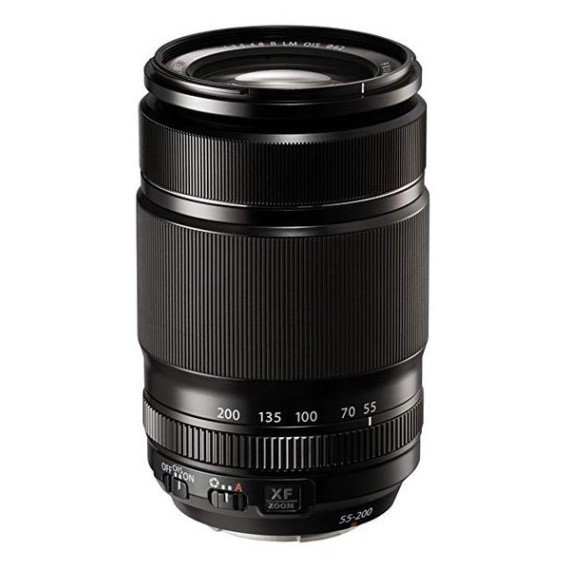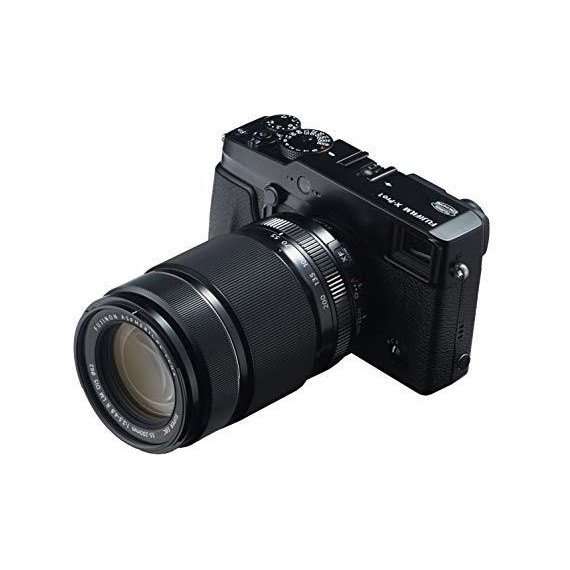Albert J. Valentino
This is a review of the new Fuji 55-200 for my XE1. Let me start out by saying this is a superb piece of glass and if this is a focal length you want or need, then Fuji blows the competition away in almost every area. Below is a review from someone that has owned a Nikon 70-200 f/2.8 VR I lens since 2005. For my Fuji I also have the 18-55 zoom (slightly better than my old Nikon 17-55 f/2.8 and 16-85 VR). Also, for my XE1 I use the Fuji 14mm f/2.8 (superb glass) a Rokinon 8mm fisheye for Fuji mount, and Tamron 90mm f/2.8 adaptall manual macro. Optics: Outstanding!!! Both at the short and long end, wide open, and in corners. It gets better when stopped down a bit but there are no week areas, especially at the long end which is common for lenses of this range. I would put this lens as at least as sharp as the Fuji 18-55 f/4, and very definitely sharper at 55mm than the Fuji 18-55 zoom, which is no ordinary kit lens. So at 55mm the long zoom might be better choice and it is also slight faster, f/3.5 vs f/4 which makes it slightly better, but much bigger, for head shots to get more blur in the background. Also, I tested my Nikon 70-200 f/2.8 VR I, tripod mounted, on my XE1 with an adapter at the sweet spot, f/5.6, against the Fuji 55-200 at the long end. It was a dead tie at f/5.6 for Nikon (2 stops closed) vs. f/7.1 on the Fuji sweet spot (about 1+ stops closed). Sold my Nikon long zoom (and as of this update sold off all my Nikon equipment with no regrets). Hot Spots: None!!! By hot spots I am referring to using this lens with an infrared filter like a Hoya R72. I have tested this filter and there are No hot spots at any aperture or focal length making this lens great for IR filter work. On the fuji 18-55 zoom, hot spots are an issue at all focal lengths. They manifest as a light colored circle in the center which gets smaller and brighter as you stop down. So the fuji long zoom, and the fuji 35mm prime, are excellent for this type of work. Bokeh: smooth and beautiful. Nothing harsh here but remember, this is a relatively slow lens so do not expect the same blur of a f/2.8 at f/4.8 - of course the Sony is f/6.3 so even less blur potential. The best blur will be at the long end since the FOV is most narrow and that will smooth out busy backgrounds, especially if the background is not close behing the subject. OIS: Best I ever used. It is possible to shoot at 200mm and 1/20 second with good breathing technique and get sharp results. This, along with the high ISO of the camera, is a game changer. I cant possibly do that with my Nikon 70-200 f/2.8 VR but then again the lack of mirror slap vibration, which can cause slight blurring at 1/8 - 1/60 sec, is not a factor for a mirrorless body. Just do not breath heavily, be like a sniper, shoot between breaths and roll your finger over the shutter instead of pressing down. OIS is great but only when combined with good technique. Build: Same as the 18-55 except the zoom ring is rubber. Balance: The lens balances surprisingly well and the greater weight of this lens vs the slower competition is not a concern. It is easy to hold for long periods without fatigue and it looks solid, not like a cheap toy. I noticed that the Fuji neck strap is not ideal for long walks with this lens, like an hour or more before it begins to get uncomfortable. So perhaps a wider neck strap will help. I used thick Op/Tec Pro neck straps on my Nikons which are great. The included strap is not bad and perfect for everything else, but if you carry the lens around for long periods a wider or cushioned strap will make life a bit easier. Focus: Mediocre. This is the weak link of the system, not the lens. I suspect this will improve with future bodies using different focus technology. Anyone that knows the Fuji X-system knows it is a fantastic camera to shoot stills, not action. This lens will perform great when taking your time, not point and shoot quickly. Focus is accurate, but not fast, the opposite of DSLRs which are fast but not always accurate. Focus Tips: If you are having trouble try these 3 tips. 1) Change the size of the focus box. Generally larger is best for good light, while smaller is better in poor light. 2) Switch focus mode to C on the body. This trick also works on the 18-55. It is for Continuous focusing for moving subjects, but that application works poorly, yet C mode can make the difference between getting focus and hunting. Try it, you might be surprised how well this can work. 3) Set the camera to M mode. Press the AF button on the back which will AF on whatever the focus sensor is on. Then Manually turn the focus ring to fine tune. This is great of your subject makes for a poor AF target and there is a good target close to the subject. Also, when in M mode if you press the thumbwheel down it magnifies the image in the EVF or LCD 3x so you can see what you are doing. This is extremely useful when using Manual lenses. So aside from slow focus this is an outstanding lens - but if you are looking to shoot action then this is the wrong system for you, period. Fuji is no stranger to making great glass and, along with Canon, are the two major manufacturers of motion picture lenses in the world. Fuji glass it up pretty much up there with Zeiss (the new Zeiss 12 and 32mm lenses compared very well with the Fuji 14 and 35) and a hair below Leica. Their lenses are more expensive than the other non-Leica mirrorless competitors, but less expensive than the top shelf brands of Zeiss and Leica. That makes Fuji lenses some of the best value around and the lens is critical at bringing out the best in a sensor - the rest is up to the photographer. This lens should be great for landscape and works well with filters, 62mm ring. I have step up rings so am using a 67mm CPL filter on this and my other lenses with step-up rings. Bottom line: Excellent, Best in class glass. Highly recommended!!!








